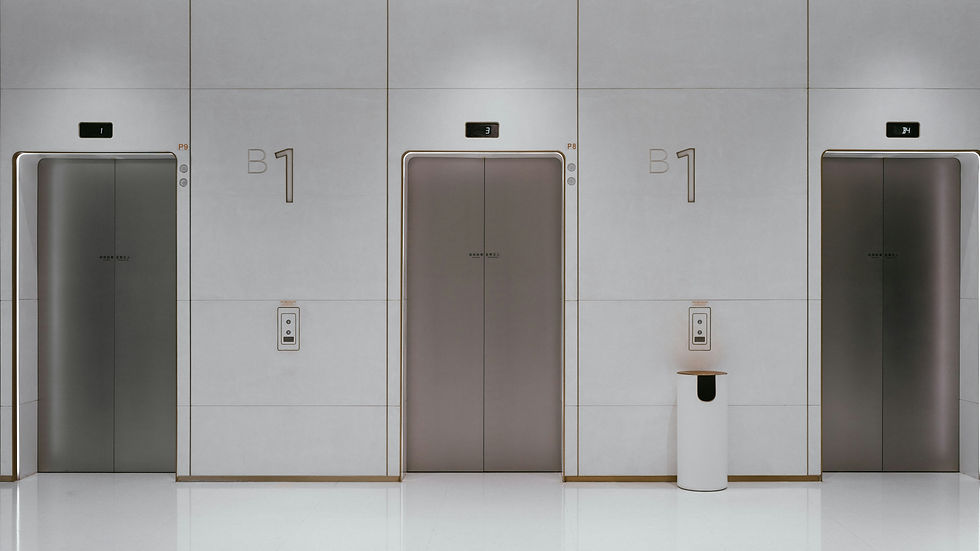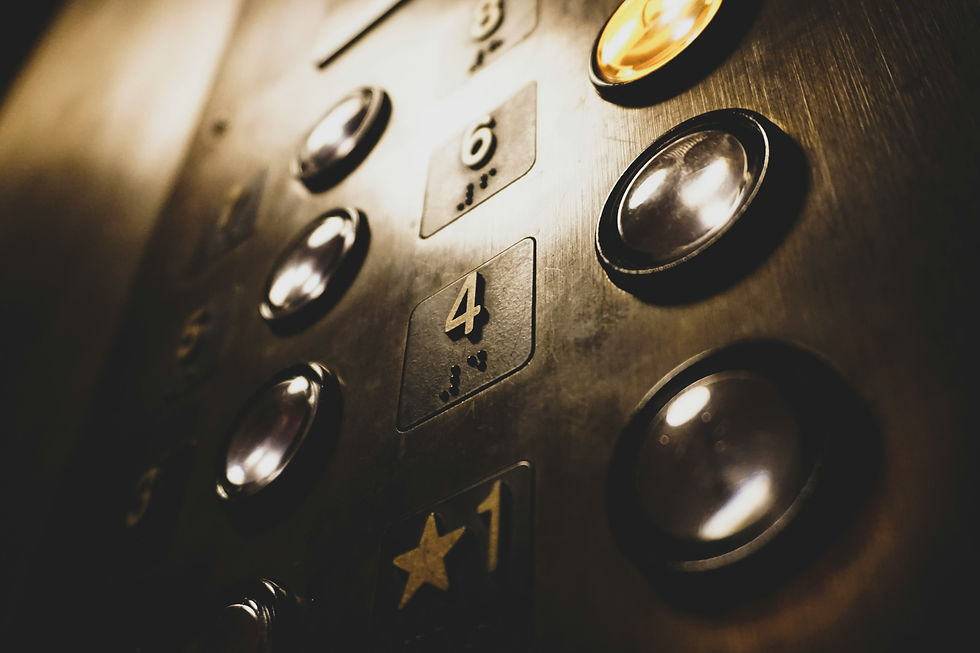Understanding the Main Types of Elevators for Commercial and Residential Buildings
- vsaconsulting
- Aug 10
- 2 min read
Elevators are more than just a means of moving people between floors—they are essential infrastructure in both commercial and residential properties. Choosing the right type of elevator impacts a building’s functionality, energy efficiency, and long-term maintenance costs. Below is an overview of the main elevator types, their advantages, and common applications.
1. Hydraulic Elevators
Hydraulic elevators use a piston powered by hydraulic fluid to raise and lower the cab. They are ideal for low- to mid-rise buildings (generally up to 6–7 stories) due to their smooth ride and ability to handle heavy loads.
Pros:
Lower initial cost than some alternatives
Quiet and comfortable operation
Can support heavy freight capacities
Cons:
Slower travel speed than traction elevators
Requires a machine room and space for hydraulic equipment
Potential environmental concerns if hydraulic fluid leaks

2. Traction Elevators
Traction elevators use ropes and counterweights, driven by an electric motor, to move the cab. They are available in geared and gearless models. Gearless traction systems are common in high-rise buildings due to their speed and energy efficiency.
Pros:
Faster travel—ideal for tall buildings
More energy-efficient than hydraulic systems
No need for a large piston or hydraulic fluidCons:
Higher initial installation cost
Requires more complex maintenance
3. Machine-Room-Less (MRL) Elevators
MRL elevators are a modern variant of traction systems where the machinery is compactly installed within the hoistway, eliminating the need for a dedicated machine room.
Pros:
Saves valuable building space
Lower energy consumption
Suitable for mid-rise buildingsCons:
Can be more challenging to service due to compact design
Higher upfront cost than some hydraulic options
4. Pneumatic (Vacuum) Elevators
Pneumatic elevators use air pressure to move the cab between floors, often with a sleek, transparent cylindrical design. They are more common in residential or specialty applications.
Pros:
Minimal construction requirements—no shaft or pit needed
Modern, compact design
Energy-efficient for light loadsCons:
Limited passenger capacity
Slower travel speeds
Higher per-unit cost for small installations
Choosing the Right Elevator
Selecting the right elevator depends on factors such as building height, passenger traffic, space availability, and budget. For high-rise towers, traction or gearless systems are often best. Mid-rise commercial buildings may benefit from MRL designs, while low-rise or heavy-duty freight applications may lean toward hydraulic. Specialized spaces or retrofits may find pneumatic elevators ideal. VSAConsulting is an elevator consulting company and can help you with these decisions. https://www.vsaconsulting.com



Comments